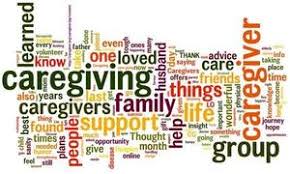It’s a common refrain in senior living that today’s assisted living communities are closer to yesterday’s skilled nursing facilities.
Seekers of Meaning Podcast Posted Online March 7, 2025
What's Next Longevity Deal Talk Episode 32, January, 2025
What's Next Longevity Venture Summit, June, 2025

 A term that means what you want it to mean. It's crazy. Search for the term 'caregiving technology.' At the top of the retrieved page – an ad for
A term that means what you want it to mean. It's crazy. Search for the term 'caregiving technology.' At the top of the retrieved page – an ad for
Comments
BUT THERE ARE JUST NOT ENOUGH PEOPLE
Tons of companies are going after a finite quantity of people available who want/can take care of elders.
Is one going to win? Even then there are still not enough people (although more productivity will multiply same people to do more things). But I believe your original intention was to encourage technology to somehow fill the gap as best possible to care for the elderly/infirm/PWD now and IN THE FUTURE. Can we define a panacea to solving the care challenges 5-50 years from now (this would cover all the people born as of today. Comments Laurie>
Home care -- a fragmented and inefficient industry
11,000 individual companies, no collaboration on transportation (long distances between where workers live and care recipients are) or work assignments and shifts. When an industry is that inefficient and the demand exceeds supply, eventually efficiencies are introduced. Add remote monitoring cameras, sensors, voice-based interactions, schedule sharing -- all part of making the industry work for people who need it.
From Tandy Trower - Hoaloha Robotics
While there may still remain a requirement to consider the role of technology in assisting the caregiver, I still believe that the more important priority is empowering the senior. Building solutions that augment them seniors to be more independent and you lessen the requirement for caregivers to look for solutions.
This will be increasingly important as the largest component of our aging population are the Boomers, who are already tech-savvy, have always been a generation seeking greater independence and will demand solutions that enhance their lives, not reinforce the negative image of a being dependent individual.
There may still value in caregiving technology and services today, but doing so is addressing the results of seniors not having adequate resources at their disposal to care for themselves. What person at age 30 40, or 50 unless significantly disabled, seeks for other people to take care of them. Why do we think that at age 70 or 80, that we prefer to be "taken care of"? We both know that the majority of seniors want to "age-in-place". WHERE are the products that enable this?